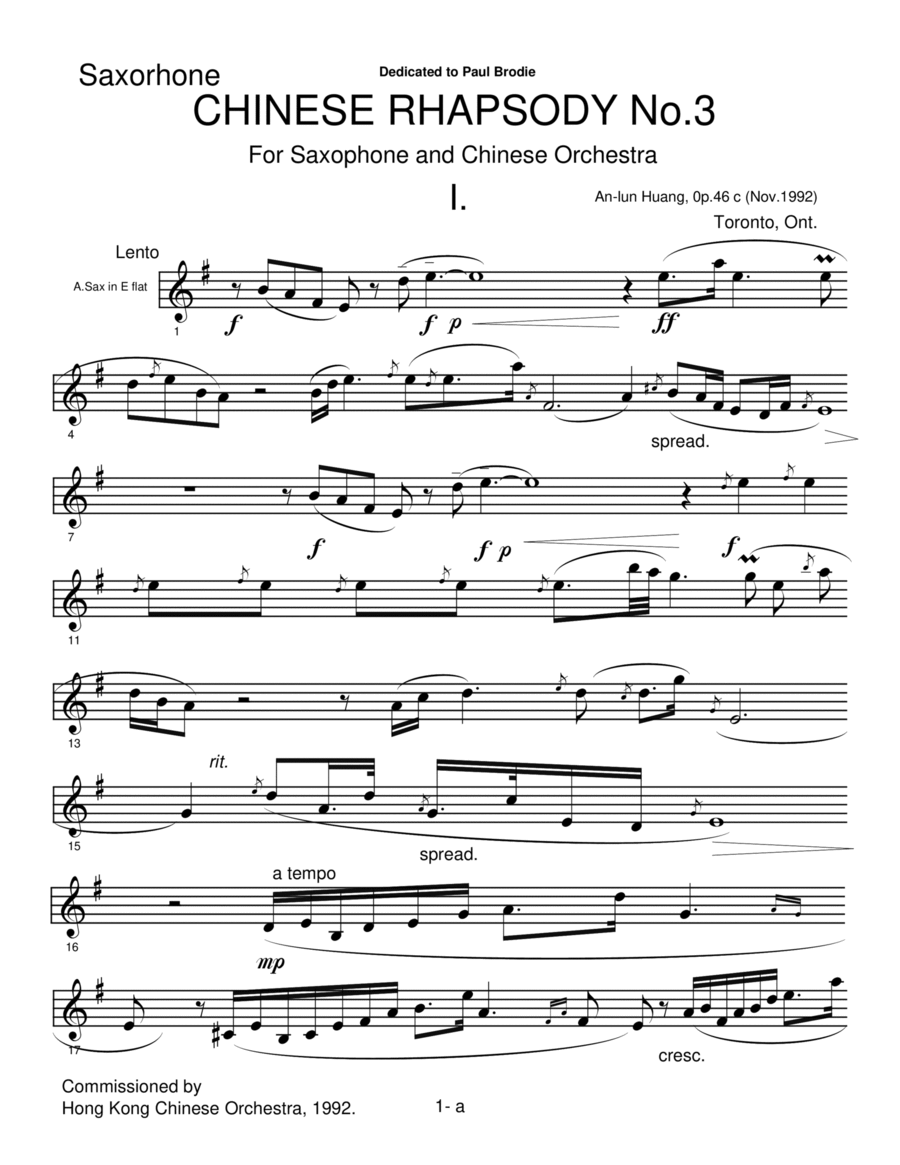Alto Saxophone Solo - Level 5 - Digital Download SKU: A0.1049003 Composed by An-lun Huang. 20th Century,Classical,Contemporary,Multicultural,Traditional,World. Individual part. 16 pages. DoReMi Edition #653396. Published by DoReMi Edition (A0.1049003). Chinese Rhapsody No.3 was composed e in Toronto, Canada , 1988. Huang dedicated the piece to the Canadian Saxophonist Paul Brodie who premiered it in Parry sound of Ontario in the same year. Written in Saibei Folk Style, the music is divided into 5 movements without stop. As usual, Huang didnât use any folk song . But the typical taste of Huangâs âZhang Jia Kou[張家å£] accentâ is pretty easy to be identified. With the concert virtuosity, the 1st movement is composed as an emotional Cadenza which expresses the profound affections to the land of Saibei. Using the same Alto Sax., the lyric 2nd movement is followed by a folk dance, the 3rd movement. Chang to a Soprano Saxophone, the 4th movement is sound like a dreamy nocturne which is interrupted by the percussions of the fiery 5th movement. The whole Rhapsody ends on a climax of the Chinese Northern west âwind and percussion âstyleâ. Brodie found more than 300 trills in this piece. Perhaps this is the key to perform the music in real Chinese style. Huang has composed 5 versions of these pieces for different ensembles: saxophone solo with piano, or strings, or winds/brasses, or Chinese traditional orchestra, or symphony orchestra. The attached mp3 was performed by the German saxophonist Jurgen Demmler with pianist Peter Grabinger in 1996. Duration: 20â.
